As an Amazon Associate I earn from qualifying purchases.
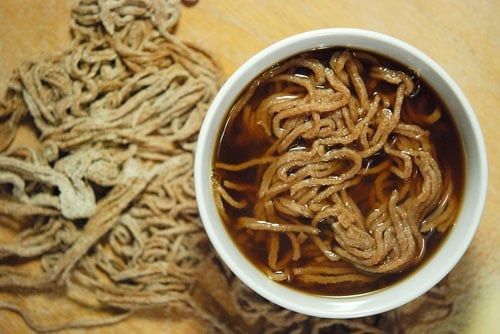
Making stocks and broths are among the core skills of any good cook, and it is a labor or love I embrace wholly. As a hunter, angler and a gardener, I can often make a first-class stock solely with ingredients I’ve grown, caught or shot. This to me is deeply satisfying. Venison stock is one of my mainstays throughout the year.
While some will make a stock without vegetables, I am not among them. They add so much to the final flavor of a stock and can transform it from an additive into a full-fledged broth suitable for drinking on cold days. Incidentally, while I use stock and broth interchangeably, technically a stock is a base and a broth something you can serve on its own; generally a broth is more flavorful and better seasoned than a stock.
Other than the venison, my essentials are: Onions or leeks, carrots, celery, bay leaves, parsley. I will add other herbs as appropriate, most often rosemary and thyme, and sometimes juniper berries. Secret weapon for venison stock: parsnips. Their sweetness brings a lot to the party.
First step is roasting the bones. I like darker, fuller stocks and this is what does it. I roast my deer bones at 400°F for an hour or so, until they are yummy-looking. Incidentally, meat makes better broth, so add some if you can. Secret trick: Save all the gnarly, sinewy bits and trim not even fit for the grinder and roast them along with the bones; don’t include bloodshot meat, though.
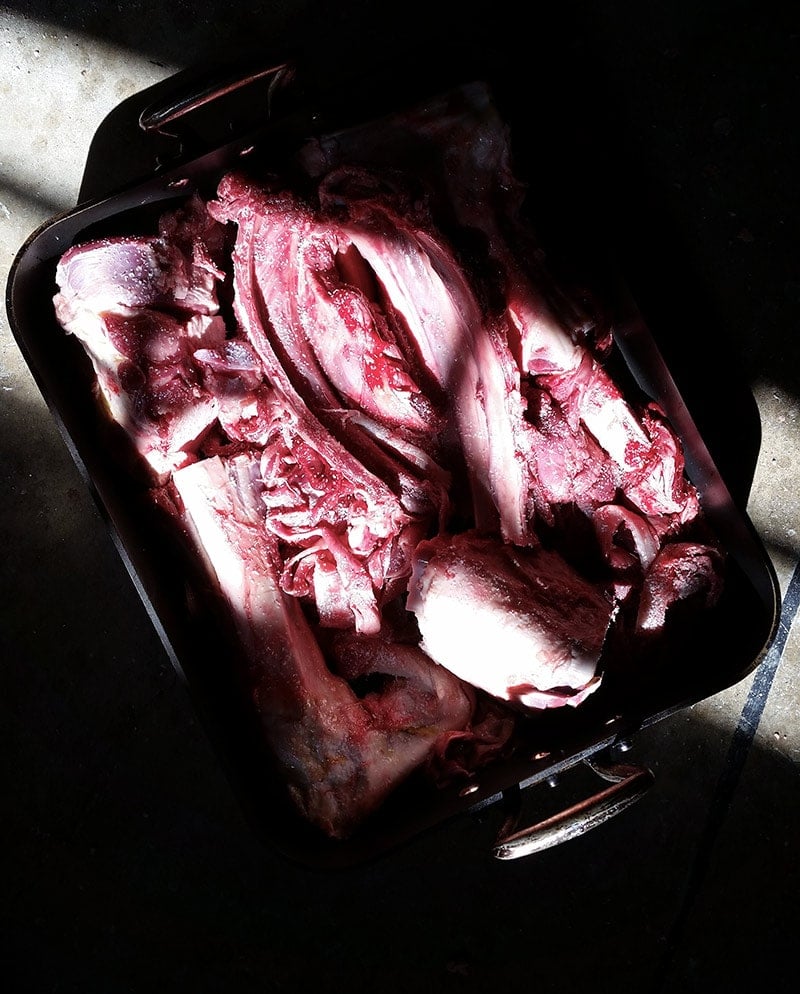
Next cram your bones and trim into the stockpot and cover with cold water by several inches. Cold water will you produce more collagen, and it’s collagen from the joints and cartilage and skin that builds body in your stock by making it thicker than water. You only get this by letting the water heat gradually. Secret trick: Go to the butcher and buy a calf’s or pig’s foot and add it to the pot (don’t roast it, though). It will add a huge amount of body to your broth.
Bring the broth to a boil and skim off any scum that floats to the surface. After the surface is clear, reduce the heat to a bare simmer. You want it to shimmy, not roil, not even bubble too much. A boiled stock will turn cloudy, and the higher temps can extract bitter flavors from the bones. Let it do this for several hours. How long? Up to overnight.
After the meat has infused the water to your liking — 4 hours is a minimum for me — add your veggies, roughly chopped. Remember that old, crappy veggies will not improve by cooking them. That said, the ends of things make great stock, as do onion skins, which will help turn a broth a lovely brown. Stir in your nice vegetables and let it cook for another 90 minutes to 2 hours. No more.
After this, strain everything out. Grab all the big stuff with tongs first, then set a paper towel into a fine mesh sieve. Ladle your venison stock through this into a large bowl or plastic bin. Is all of this necessary? Yes. Unless you want a mucky, cloudy stock. And it is more than aesthetics: The impurities are just that – impure, and add off-flavors to your otherwise wonderful brew.
Once your stock is strained, clean the stockpot or pour the strained liquid into another one. Now you can reduce it if you want to.
This is also the time you can salt the stock. Stock gets saltier the longer you cook it down because salt does not evaporate with the water. So add it close to the end and you will know what you’re getting. If you’re doing demi-glace, don’t salt at all.
All of this takes time, but not a lot of it is active. And the process is comforting to me, as much so as the reward.
Venison Broth
Ingredients
- 4 pounds venison bones, with some meat on them
- 4 tablespoons olive oil
- Salt
- 1 tablespoon crushed juniper berries (optional)
- 2 tablespoons fresh rosemary
- 1 tablespoon crushed black peppercorns
- 1 tablespoon dried thyme
- 4 bay leaves
- 1 medium onion, chopped
- 2 large carrots chopped
- 2 celery sticks chopped
- About 1/2 of a bunch of parsley chopped
Instructions
- Coat the bones with olive oil and salt well, then roast in a 400°F oven until brown. If you can stand it, keep some meat on the bones — trim and shanks are ideal for this. It will make a better broth. Put the bones in a large stockpot. I saw the bones into large pieces with a hacksaw; this lets me fit more bones into the pot, again, making a richer broth. Cover with water and bring to a simmer over medium-high heat.
- Skim the froth that forms on the surface and simmer very gently for at least 4 hours; I let it go overnight. You want the broth to steam and burble a little, not roil.
- Add the remaining ingredients and simmer for another 2 hours.
- Using tongs, grab out all the bones and large bits and discard. Set a paper towel in a fine-mesh sieve that is itself set over another large pot. Ladle the venison broth through the cheesecloth-lined sieve. Discard the dregs in the broth pot, with will be loaded with sediment and other bits.
- Add salt to taste to the clarified broth and pour into quart jars and freeze (or pressure-can — you cannot can broth in boiling water). If you freeze, leave about 2 inches of space at the top of the jar or the jars will crack when the broth freezes. Use within a year.
Notes
Nutrition
Nutrition information is automatically calculated, so should only be used as an approximation.

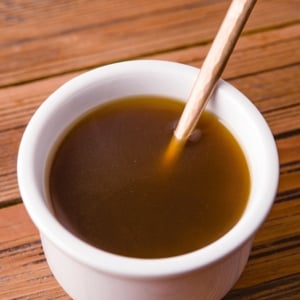

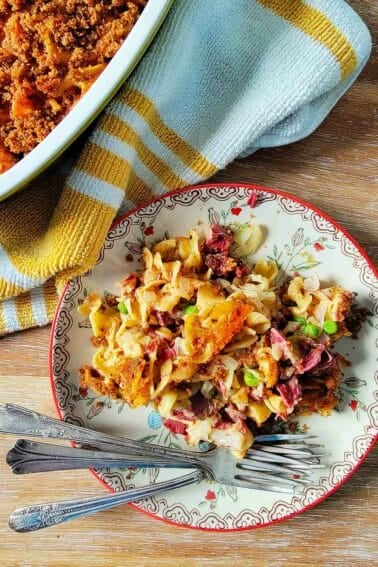
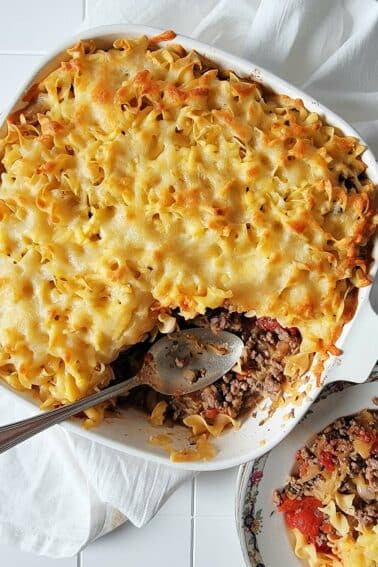
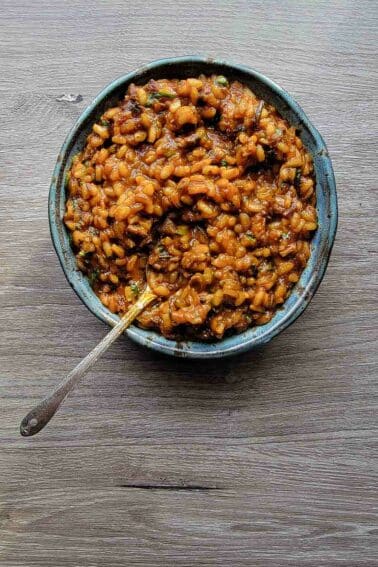
You mention parsnips in the post but not the recipe. How many would you reccommend?
Just boned out a mulie over the weekend, after hanging for 11 days (shot on the 4th of December during our late muzzle loader season here in WA). I plan to use the leg bones to make a stock as in your directions. Demi-glace to follow. Thanks for the inspiration!
Ray: In those areas I only use leg bones. Most research suggests the highest chance of ingesting the prion or whatever it is that causes CWD (which is not directly linked to harm in humans, BTW) will be in spinal tissue, so I lose the spine, bone out the neck and don’t make head cheese or barbacoa from the heads of those deer.
Do you have any concern sawing marrow bones in areas with CWD and using them in making stock?
What do the Juniper berries add? All I can think of is Gin, which I can’t abide so I always leave them out.
In response to Lynne’s comment of adding vinegar to stocks, I cooked with a guy who said his veal bones actually disintegrated once after simmering overnight in an acidulated base. I’ve also heard of this problem when adding vinegar to a stock that’s cooking in a pressure cooker.
Personally, I add a Tbsp of apple cider vin to stocks (I usually make small batches, however- 3 or 4# of bones at a time), and have great results.
Has anyone had any problems with the disintegration I mentioned? A cup of vinegar sounds like a lot, but I imagine that there are a lot of variables… Amount of vinegar, simmering length, bone structure, etc. etc…
I cooked the neck of an Elk, today, used the meat for Chilli. I want to keep the broth, but my husband said it would not be good for anything later. I disagree, and want to cook it down more and can or freeze to use later. Your thoughts…
Add a cup of vinegar or lemon juice when you start the boil–it leaches the minerals out of the bones–so stock is more nourishing.
Gayle: Sorry, but I have never pressure-canned stock. I always freeze mine.
Hi,
I made some halibut fish stock. I’ve combed the net and can’t get the directions for pressure canning. Well, actually on blog said 10 lbs for 30 min. 1/2 pts. and another said 110 minutes!!!
This broth is cooked. Do you think maybe 10 lbs for 40 minutes for pints?
Thanks,
Gayle
Great info and tips Hank.
I know my post is a little late from the dates of the previous comments but oh well. I shot 8 pheasant on opening weekend and want to make some pheasant stock to go along with however I decide to prepare the pheasants for my Thanksgiving dish. I just got done cleaning the birds up and have the breast on the bone, vacuum sealed in the freezer. I removed the leg meat from the bone and vacuum sealed that too. I am using the leg bones for the pheasant stock.
I was wondering how you froze your stock. Do you put it in a bag, container or anything else? My freezer space is limited. I was thinking about putting it in a bag and vacuum sealing it and then putting that in a container to eliminate any spills.
Also any pheasant recipes would be helpful too. I figured that I would use the leg meat for a casserole of some kind or maybe a stew, and was also thinking about baking the breast. Just trying to surprise the family this year with something different. We all gather at a families house and bring dishes to go along with the traditional turkey.
Thanks again!
Amy: Any will do. If I am making a generic small game stock, I will use a combination of animals — pheasant, rabbit, duck or quail. With any bird stock you use the whole carcass, and with big-game stocks I use the lower legs (shanks) and necks, but that is just my preference. You could use any bones you want.
what bones do use in a light game stock?
No, it is not essential that you start with uncooked bones, although you won’t get the same body as you would with raw ones.
I have in fact made smoked wild boar stock, and it is strong — use it for greens or something where you want a porky, smoky flavor.
Is it essential to start your stock with uncooked bones? I have some ribs from a wild pig that I’m planning to smoke this weekend and I’m wondering if the leftover bones will still be suitable for making my first stock.
What a coincidence–I JUST this weekend devoted an entire day (though not all hands-on, of course) to making beautiful, fragrant stock from the carcass of a ginormous wild turkey that Alex got during the last week of bow season. The bird was WAY too big for me to consider plucking and roasting whole, so we skinned it and removed every last bit of meat. I reserved the legs, wings, and neck in the freezer, because even broken up, the frame was barely fitting in the pot.
I went with the “low and slow” method, to the extreme: put the raw frame, chopped vegetables, and water in my giant Crock-Pot, put the lid on (weighted), and let it go for 4 hours on high and then 8 more on low. All that remained was to chill the pot in ice-water in the sink, then strain the cooled liquid through cheesecloth. It came out PERFECT. Crystal-clear and intensely flavored, and I didn’t have to skim or clarify it at any point. From my experience, not boiling is the key to preventing cloudiness, but like you said, there are as many methods for making stock as there are cooks making it.
Ths is fascinating, Hank. Thanks for the tips! I have begun to make my own stock each week now, in the slow cooker and the results are spectacular.
I’m amazed at the variety of stocks you can make. I sometimes make lamb stock since we eat a lot of lamb but I make sure to use it for Mexican tortilla soup which uses a lot of lime (it covers the strong flavor). I’m wondering if that’s what the juniper and rosemary do. Also do you use game stock for particular dishes or just anything. Maybe I’m just a game novice and unused to the stronger flavors of game.
We’re going to get local chickens at last! I am never impatient with the farmer. Only inside. I saw the sign-up sheet, and I swooned. Now we have the potential for all of our favorites. Stock will follow. Bliss.
Ah. Debating stock. I’m a happy man.
I’m in Charcuterie’s camp of not ever boiling it, but Hank’s method accomplishes what many seem to recommend as the pre-cook to get rid of impurities – which he refers to. Interesting. I’ll have to try it.
I just can’t see any benefit to omitting veg from the stock. I wouldn’t even consider it.